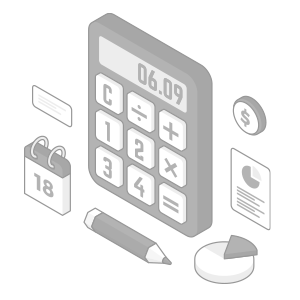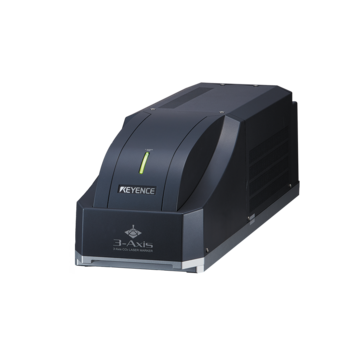Industrial Laser Marking Systems / Laser Markers
Deep Laser Engraving
-
Tags:
- Laser Engraving , Aerospace , Metal
Lasers are versatile machines that have found their way into almost every industry. They serve as tools for etching, engraving, cutting, drilling, welding, and texturing, to name a few. Among all the processing methods, engraving stands out as one of the most popular applications of laser technology.
The umbrella term “engraving” has two types: shallow engraving and deep engraving. When you hear the term “laser engraving,” it's likely someone is referring to shallow engraving. Deep engraving and laser engraving are similar but not interchangeable.
Deep laser engraving is not for just any industry or medium. The materials must withstand deep engraving, and it can not compromise the component.
Deep engraving differs from typical laser engraving in speed & power. In this article, we will explore how deep laser engraving is used and its process.
What is Laser Engraving?
Before delving into deep engraving, let’s first establish what laser engraving is. Laser marking machines engrave by mimicking an uploaded design with the laser beam. The laser beam shoots onto the target and generates sublimation; sublimation is the process of a solid turning to a gas without stopping in the liquid state.
Since the solid target design turns into a gas, it vaporizes and leaves behind the indented mark.
The engraved marks are logos, serial numbers, 2D codes, and decorations. The marks are for traceability, identification, aesthetics, and texturing. You can engrave on metal, wood, plastic, glass, rubber, and ceramic.
We’re here to provide you with more details.
Reach out today!

What Makes Deep Laser Engraving Different from Laser Engraving?
It’s no surprise that deep laser engraving designs have more depth than standard laser engraving. The two processes are similar but different. Deep laser engraving also uses the sublimation process but over a longer amount of time, with higher power.
Deep laser engraving is also limited to certain industries and materials. For example, certain aerospace regulations do not allow deep laser engraving because of the risk to a component or material’s integrity.
Deep engraving is mostly used for wood, plastic, or metals for the construction and firearms industries.
Discover more about this product.
Click here to book your demo.

What Applications Can Deep Laser Engraving be Used For?
Deep laser engraving is limited compared to standard engraving, but it does have applications that it excels in.
Backfilling
Backfilling is a popular use for deep engraving. It is the process of filling an engraved design for a colored appearance, additional stability, or support.
The depth depends on the filling, but it generally requires an engraved depth of at least .025 inches for the filling to stick well inside.
Paint is a common backfill used with deep laser engraving to add color or contrast. The construction industry also uses soil, sand, and stone as deep engraved fillings, but these require depths of at least 2 inches.
Logos and Designs
Choosing to add a deeply engraved design for a logo helps it stand out. These deep cuts are used for coins, dog tags, company logos, and memorabilia.
Traceability Marks
Traceability marks like serial numbers and barcodes for industrial tools are also a common use of deep laser engraving because of their durability.
We’re here to provide you with more details.
Reach out today!

Deep Laser Engraving Metal
Deep engraving metal is best achieved with a fiber laser. Fiber lasers have high outputs that work well with metals and produce high contrast and deep marks.
However, not all metals are created equal. Metals that are susceptible to corrosion are more difficult to engrave.
Deep engraving stainless steel and iron fall into this category. Both iron and stainless steel corrode faster from an exposed inside. Especially since stainless steel naturally has a protective layer, and the engraving disrupts it.
If you plan to use a deep metal laser engraving machine on stainless steel or iron, consider adding an anti-corrosion seal after engraving.
Deep Laser Engraving Wood
Wood doesn’t absorb fiber laser energy, so it’s best to use a CO2 laser for deep laser engraving wood. CO2 is the best laser for engraving wood because of the long wavelength and high heat dependence.
KEYENCE’s CO2 laser marker has a high power density that helps engrave with depth.
Curious about our pricing?
Click here to find out more.

How to Choose the Right Deep Laser Engraving Machine
When choosing a machine for your engraving project, consider how deep you need your mark, what material you are engraving, and the dimensions of the mark. To do this, there are five aspects you should consider before choosing your machine: speed, power, engraving time, and material.
Let’s take a look at each of those contributing factors and why each is important.
Speed
It’s common to confuse speed with frequency, but they are different. Frequency is how many times the beam hits the target in a certain amount of time, and speed is how long it stays on the target. Generally speaking, the deeper you want to engrave will mean you need a slower speed.
Keep in mind that although a slower speed can result in deeper engraving, other factors will affect it as well.
Power
It’s a given that the higher the power, the more intense energy the laser will generate. More intense energy may cause deeper engraving. However, like speed, this is not always the case if other factors are manipulated.
Engraving Time
It takes longer to engrave deeper. The beam has to focus the energy for longer onto the target to vaporize deeper than the substrate and get through.
It’s like sawing through the same material for different amounts of time. The longer you do it, the deeper you’ll cut through.
Materials
Choose your laser engraving machine based on the material you’re working with. The rule of thumb is that fiber lasers work best for metals, and CO2 lasers are best for wood. Choosing the wrong laser could cause subpar results.
Discover more about this product.
Click here to book your demo.

Need Assistance Choosing a Deep Laser Engraving Machine?
As we’ve seen, deep laser engraving is a subtype of engraving that requires different settings than typical engraving. However, that doesn’t mean it needs a different machine. At KEYENCE, our laser marking machines can shallow and deep engrave because of the advanced settings range and auto-adjusting focal point.
Whether you need an engraving machine for traceability, logos, or backfilling, our team can listen to your needs and challenges. From there, we will help you pick a laser machine that excels at your current project and has longevity for all your future projects.
Contact our team today to discuss your desired depth, project, and materials.
We’re here to provide you with more details.
Reach out today!

Related Downloads

KEYENCE's MD-F Series offers unmatched functionality in a compact design.

This quick guide introduces the basics of metal marking. Learn why different wavelengths matter and discover the various ways laser light interacts with metal parts.
![TIPS for MARKING IMPROVEMENT [Marking on metal]](/img/asset/AS_47048_L.jpg)
Providing a complete comparison of mechanical processing and laser marking.More examples of how switching from contact-based marking has been successful!Laser marking helps to cut costs and improve efficiencies.





